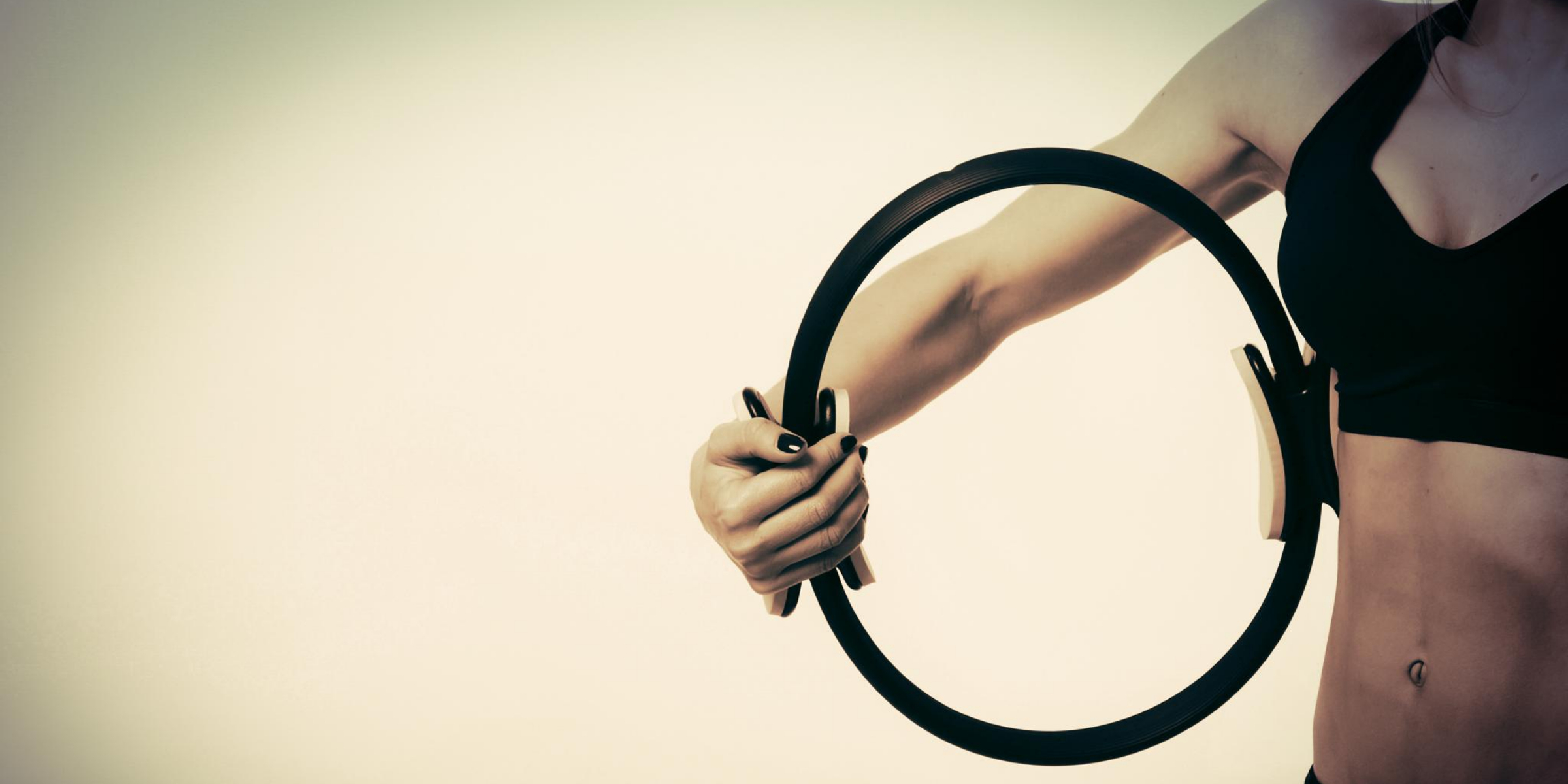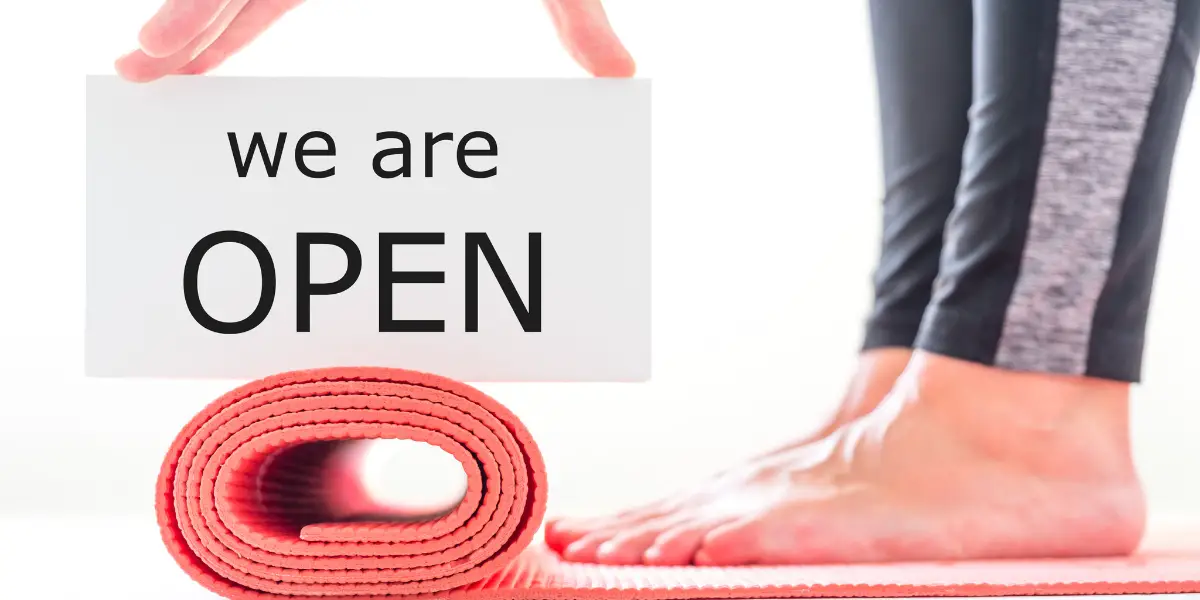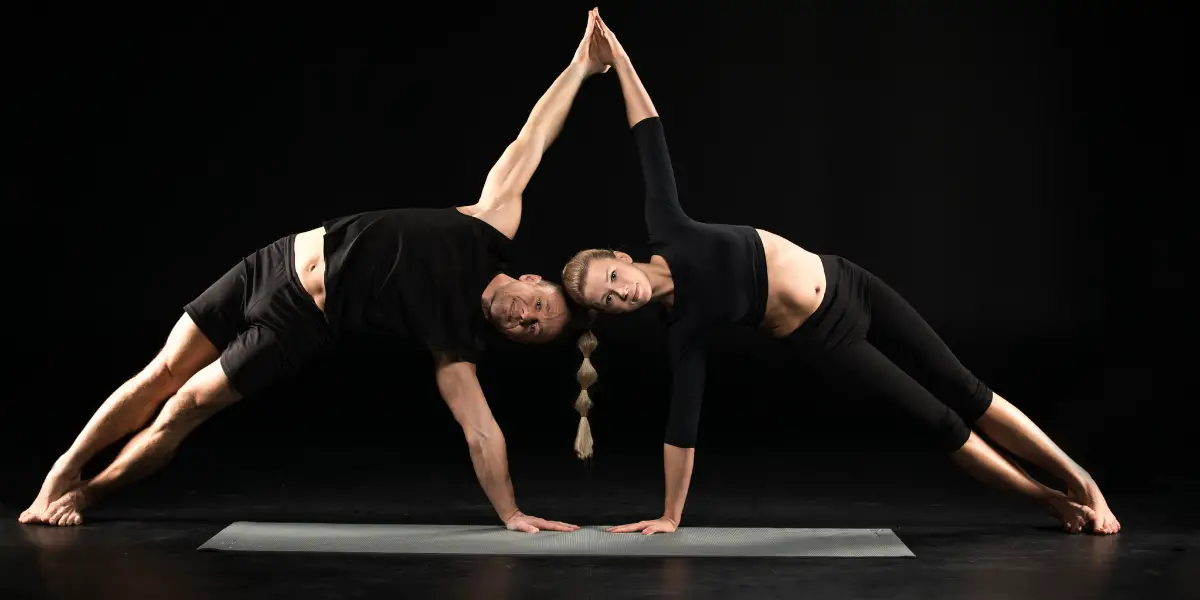Are you recovering from an injury or illness and looking for a low-impact exercise to aid in your rehabilitation? Look no further than Pilates! This form of exercise is known for its ability to improve flexibility, balance, and core strength, making it an ideal choice for those seeking to rebuild their physical abilities and renew their vitality.
One of the key tools used in Pilates is the Pilates ring, also known as a magic circle. This small, circular device adds resistance to your workouts, allowing you to target specific muscle groups with precision.
In this article, we will explore the benefits of Pilates for rehabilitation, the unique features of the Pilates ring, and how you can use it to recover, rebuild, and renew your body. So, grab your Pilates ring and let’s get started!
Key Takeaways
- Pilates is a low-impact exercise that is ideal for rehabilitation and post-operative recovery, as it improves flexibility, balance, and core strength while reducing the risk of injuries.
- The Pilates Ring is a versatile and effective tool that can be used to add resistance and target specific muscle groups, improving core strength, flexibility, and body awareness.
- Bicep curl exercise is a safe progression that can help build upper body strength, improve posture, reduce tension, and increase range of motion.
- Consistency is key for best results, as Pilates can help rebuild after an injury or surgery while regaining mobility, renewing strength, and promoting physical and emotional wellness.
Understanding the Benefits of Pilates for Rehabilitation
You’re going to love how Pilates can benefit your rehabilitation – it’s a fantastic way to recover, rebuild, and renew your body! Pilates is a low-impact form of exercise that is ideal for those recovering from an injury or surgery.
Pilates focuses on strengthening the core muscles, which can help prevent future injuries and improve overall body alignment. The slow, controlled movements of Pilates also help to increase flexibility and range of motion, making it easier to move without pain or discomfort.
One of the key benefits of Pilates for rehabilitation is injury prevention. Pilates exercises focus on strengthening the muscles that support the spine and joints, which reduces the risk of injury during physical activity. By strengthening these muscles, you can also improve your posture and alignment, which can further reduce the risk of injury.
Pilates can also be used as part of a post-operative recovery program, helping to rebuild strength and flexibility after surgery. Pilates exercises are gentle and low-impact, making them ideal for those who are recovering from surgery. Pilates can help to rebuild strength and flexibility in the affected area, while also improving overall body alignment. Pilates exercises can also help to reduce pain and inflammation, which can speed up the recovery process.
With the benefits of Pilates for rehabilitation clear, it’s time to introduce the Pilates ring. This versatile piece of equipment can be used to intensify Pilates exercises, providing an extra challenge for those who are ready to take their rehabilitation to the next level. The Pilates ring is easy to use and can be incorporated into a variety of Pilates exercises, making it a valuable tool for anyone looking to recover, rebuild, and renew their body.
Introducing the Pilates Ring
Get ready to discover a versatile and effective tool that can take your fitness routine to the next level – the Pilates ring! Whether you’re looking to build strength, increase flexibility, or improve your overall well-being, the Pilates ring is an excellent addition to your workout regimen. Here are a few basics to help you get started:
- Pilates Ring Basics: The Pilates ring, also known as the magic circle, is a small, lightweight tool made of metal or rubber that’s used to add resistance to Pilates exercises. It typically measures about 14 inches in diameter and features two padded handles on opposite sides. The ring can be used to target specific muscle groups and can be incorporated into a range of Pilates exercises to increase intensity and effectiveness.
- Types of Pilates Rings: There are two main types of Pilates rings – metal and rubber. Metal rings are typically more durable and offer more resistance, making them a great choice for more advanced practitioners. Rubber rings, on the other hand, are softer and easier to grip, making them a good option for beginners or those with hand or wrist injuries.
- Benefits of Using a Pilates Ring: Incorporating a Pilates ring into your workout routine can help improve core strength, increase flexibility, and enhance overall body awareness. The ring can also be used to target specific areas of the body, such as the inner and outer thighs, hips, and arms, making it a versatile tool for rehabilitation and injury prevention.
Using a Pilates ring can be a great way to add variety and challenge to your Pilates practice. In the next section, we’ll explore how to use the ring to target specific muscle groups, helping you achieve your fitness goals even more effectively.
Targeting Specific Muscle Groups
By focusing on specific muscle groups with the Pilates ring, you can achieve a more targeted and effective workout that will leave you feeling stronger and more energized. The Pilates ring is an excellent tool for muscle activation, as it provides resistance training that engages the muscles in a way that traditional weights cannot. With the ring, you can work on strengthening your core, arms, legs, and back muscles, all of which are essential for proper posture and alignment.
To target specific muscle groups with the Pilates ring, it’s important to understand the different exercises that can be done. For example, to work on your core, you can use the ring to perform exercises like the roll-up or the hundred. To work on your arms, you can do exercises like the bicep curl or the tricep press. Similarly, for your legs and back, there are different exercises that you can do with the ring to target those specific muscle groups.
Using the Pilates ring to target specific muscle groups is a great way to get a more efficient workout. You’ll be engaging the muscles in a way that is different from traditional weight training, which can lead to better muscle activation and overall strength. In the next section, we’ll explore how using the Pilates ring can also help improve your balance and stability, further enhancing your overall fitness and wellness.
Improving Balance and Stability
Improving your balance and stability can be achieved with the Pilates ring, helping you feel more confident and secure in your movements.
The ring can be used for a variety of exercises that challenge your balance and enhance coordination. Here are some ways in which the Pilates ring can help you improve your balance and stability:
- Single Leg Balance: Stand with one foot on the ground and the other foot resting on the ring. Hold the ring with both hands and try to balance on the standing leg for 30 seconds. Repeat on the other side.
- Squat and Press: Hold the ring at chest height with both hands and stand with your feet hip-width apart. Squat down while pressing the ring away from your body. Return to standing and repeat for 10-12 reps.
- Bridging: Lie on your back with your knees bent and feet flat on the ground. Place the ring between your knees and squeeze it. Lift your hips off the ground while squeezing the ring and hold for 5-10 seconds. Lower your hips and repeat for 10-12 reps.
Incorporating these exercises into your Pilates routine can help you improve your balance and stability over time. As you become more confident in your movements, you may find that you’re able to perform more challenging exercises with ease.
Enhancing coordination is another benefit of using the Pilates ring. By engaging multiple muscle groups at once, you can improve your body’s ability to move in a coordinated and controlled way. This can be especially helpful for athletes or anyone looking to improve their overall fitness level.
As you continue to use the Pilates ring to improve your balance and coordination, you may find that your range of motion also improves. In the next section, we’ll explore how the Pilates ring can help you increase your range of motion and flexibility.
Increasing Range of Motion
You can enhance your flexibility and expand your range of motion with the Pilates ring. Pilates ring exercises focus on joint mobilization and help to increase your range of motion. The ring’s resistance allows for a safe and effective way to stretch and strengthen muscles, which can lead to improved flexibility and mobility.
Using the Pilates ring for joint mobilization can help to prevent injury and reduce the risk of joint pain. Pilates ring exercises, such as the leg circles and spinal twists, can help to loosen up stiff joints and improve mobility. By regularly incorporating Pilates ring exercises into your workout routine, you can increase your range of motion and improve your overall flexibility.
Improving flexibility and joint mobilization are essential for injury prevention and rehabilitation. The Pilates ring can be a valuable tool for those recovering from injury or surgery, providing a low-impact way to increase flexibility and mobility.
In the next section, we’ll discuss how low-impact exercise can aid in injury recovery without causing further harm.
Low-Impact Exercise for Injury Recovery
In this subtopic, we’ll be discussing low-impact exercises that are perfect for injury recovery. As someone who’s experienced injuries during my fitness journey, I understand the importance of avoiding further injury while building strength safely.
Through low-impact exercises, we can gradually rebuild our strength and avoid any setbacks in our recovery process.
Avoiding Further Injury
By being mindful of our movements and using proper form, we can prevent aggravating existing injuries and avoid further harm when using the pilates ring. Here are three tips for avoiding further injury:
- Start slow: Begin with simple exercises and gradually increase the intensity and duration of your workouts. This allows your body to adjust and adapt to the movements, preventing strain and injury.
- Listen to your body: If you feel pain or discomfort during an exercise, stop immediately and reassess your form. Pain is a sign that you may be pushing yourself too hard or using improper form.
- Warm up and cool down: Always take the time to stretch and warm up before your workout, and cool down with gentle stretches afterwards. This helps increase flexibility, prevent injury, and improve overall performance.
By following these tips, we can prevent re-injury and ensure that we’re using the pilates ring safely and effectively.
Moving forward, let’s discuss how we can build strength safely and effectively with the pilates ring.
Building Strength Safely
Let’s focus on how we can safely and effectively increase our strength with the pilates ring, so we can feel confident and powerful in our bodies.
When using the pilates ring for strength training, it’s important to start with safe progressions and proper form. Begin with basic exercises and gradually increase the difficulty level as you become stronger. This will help prevent injury and ensure that you’re building strength in a safe and effective way.
One effective exercise for building upper body strength with the pilates ring is the bicep curl. Hold the ring with both hands, palms facing up, and keep your elbows close to your sides. Slowly curl the ring towards your chest, squeezing your biceps as you go. As you become stronger, you can increase the resistance by squeezing the ring harder or using a heavier ring.
By focusing on safe progressions and proper form, you can effectively build strength with the pilates ring and feel confident in your body’s abilities.
Transitioning into the subsequent section about ‘pilates ring for chronic pain management,’ it’s important to note that the same principles of safe progressions and proper form apply. By building strength in a safe and effective way, we can also help manage chronic pain and prevent further injury.
Pilates Ring for Chronic Pain Management
Using a Pilates ring can be a powerful tool for managing chronic pain, as it engages muscles in a low-impact way that promotes flexibility and strength. When dealing with chronic pain, finding effective pain management techniques is essential.
While medication and surgery can be effective, alternative therapy options, like Pilates, can provide long-term relief without the harmful side effects. The Pilates ring, also known as the magic circle, is a versatile tool that can be used to target specific muscle groups and alleviate chronic pain.
The ring is designed to provide resistance and support, which helps to strengthen and stretch muscles without causing additional pain. Pilates exercises that use the ring can help to improve posture, reduce tension, and increase range of motion, making it an ideal option for those with chronic pain.
By incorporating Pilates ring exercises into a daily routine, individuals with chronic pain can experience renewed strength and vitality. The low-impact nature of the exercises helps to prevent further injury or strain, while also promoting healing and rehabilitation.
Whether recovering from an injury or managing a chronic condition, the Pilates ring can be a powerful tool for promoting physical and emotional wellness.
Renewing Strength and Vitality with Pilates Ring Exercises
Revitalizing your body and mind becomes effortless with regular Pilates ring exercises that engage muscles in a low-impact way, promoting flexibility and strength. If you’re someone who wants to rebuild after an injury or regain mobility, then incorporating Pilates ring exercises into your routine can be beneficial.
Here are some reasons why you should try Pilates ring exercises:
- Pilates ring exercises are low-impact, which means that they’re gentle on your joints and muscles, making them ideal for people who want to rebuild after an injury or surgery.
- Pilates ring exercises engage multiple muscle groups simultaneously, which helps improve overall strength and mobility.
- Pilates ring exercises can be done anywhere, whether you’re at home, in the gym, or on the go.
By incorporating Pilates ring exercises into your routine, you can help rebuild after an injury or surgery while also regaining mobility. These exercises can help improve flexibility, strength, and overall well-being.
Remember, consistency’s key when it comes to Pilates ring exercises, so make sure to incorporate them into your routine regularly for the best results.
Final Thoughts
In conclusion, the Pilates ring is a versatile and effective tool for rehabilitation, chronic pain management, and overall strengthening and conditioning. By targeting specific muscle groups, improving balance and stability, and increasing range of motion, the Pilates ring can help individuals recover from injuries and surgeries, as well as manage chronic pain conditions.
Through low-impact exercises, the Pilates ring offers a safe and gentle way to rebuild strength and mobility, without causing further damage or strain. By incorporating Pilates ring exercises into your rehabilitation or fitness routine, you can harness the healing power of this tool to renew your physical strength and vitality.
So why not give it a try and see the difference it can make in your recovery!




